#fine art architecture London
Explore tagged Tumblr posts
Text
Exploring the ambiguous terrain of photography
In the intricate dance of the photographic journey, uncertainty often becomes a compelling companion. There are instances when I find myself traversing the creative landscape without a fixed destination or a clearly defined roadmap. Yet, amidst this ambiguity, an unmistakable truth prevails – the moment of revelation, that instant when I capture an image that resonates profoundly. The allure of…

View On WordPress
#architectural photography#Black & White#black & white architectural photography#black & white fine art photography#black and white#black and white architecture#black and white architecture London#black and white architecture photography#black and white photography#Fine Art#fine art and photography#fine art architectural photography#fine art architectural photography London#fine art architecture#fine art architecture London#fine art b&w photography#Photography
21 notes
·
View notes
Text

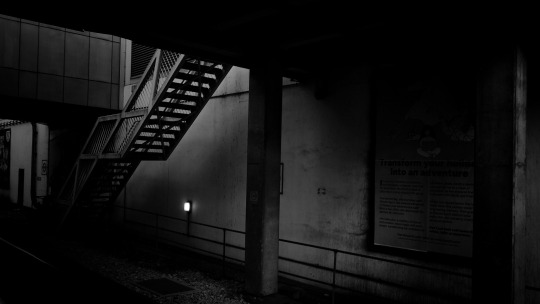
©all rights reserved / htm.studios/2023/473
Early hours of....!
#photographers on tumblr#art photography#haluk turgut mengüç#artists on tumblr#©htm.studios#black and white#monochrome#landscape#htm.studios#interiors#city scape#fine art photography#Hammersmith#london#story telling#early hours of#architecture#shadows#early morning
42 notes
·
View notes
Text
Touched by the light
Battersea power station, London I think it’s time for a short change of scenery, from landscapes and magnificent mountains to magnificent buildings. This shot is from a summer visit to London, where I have spent many happy and much more carefree years. Don’t worry though, we’ll get back to landscapes soon enough. © Epameinondas Stamos 2023

View On WordPress
#Architectural photography#Art#B&W#Battersea power station#Cityscape#Fine art photography#Journal#Life#Lifestyle#London#Photography#Urban photography
1 note
·
View note
Photo

Sketch by DanielSabau
1 note
·
View note
Text
Prince Richard, Duke of Gloucester

Physique: Average Build Height: 6′ 0½″ (1.84 m)
Prince Richard, Duke of Gloucester (Richard Alexander Walter George; born 26 August 1944) is a member of the British royal family. He is the second son of Prince Henry, Duke of Gloucester, and Princess Alice, Duchess of Gloucester, the youngest of the nine grandchildren of George V, nephew of Edward VIII and George VI, and first cousin of Elizabeth II. He is 31st in the line of succession to the British throne, and the highest person on the list who is not a descendant of George VI. At the time of his birth, he was 5th in line to the throne.


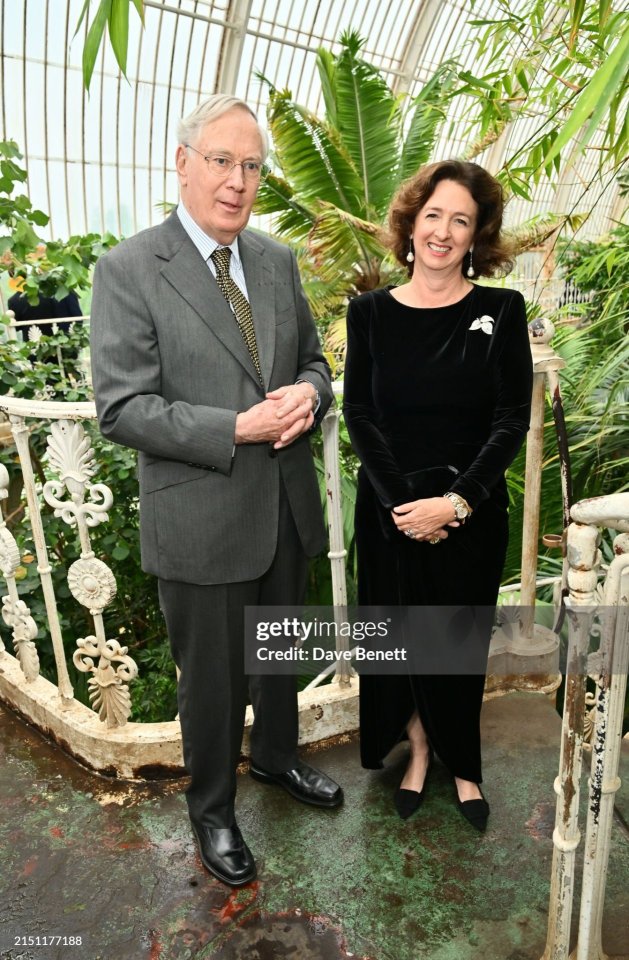
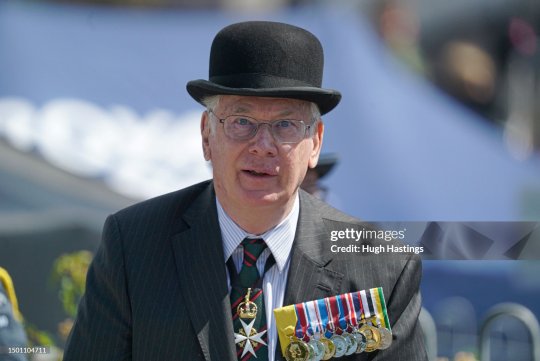

Tall, spectacled and reserved looking, he wasn't high in the line of fuckable royals until after the death of Queen Elizabeth II. The Duke isn’t the most handsomest guy being British royalty, but he has that "nerdy hot" thing going on having matured into a fine silverfox.
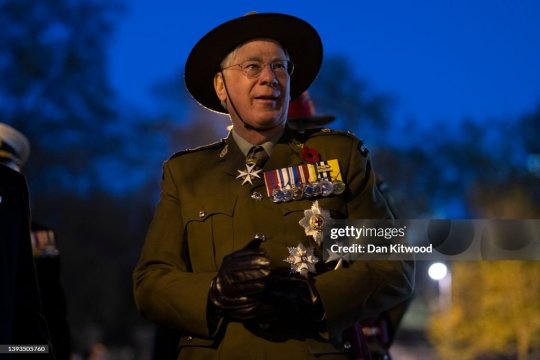


Prince Richard attended Wellesley House School at Broadstairs and Eton College. In 1963, he matriculated at Magdalene College, Cambridge, where he read architecture, graduating with the degree of Bachelor of Arts in June 1966. In 1966, Richard joined the Offices Development Group in the Ministry of Public Building and Works for a year of practical work. He returned to Cambridge in 1967, completing both parts of the Diploma in Architecture degree in June 1969. Upon passing his exams, he became a practicing architect in London.
After the death of his elder brother, William, he was in direct line to inherit his father's dukedom, to which he succeeded in 1974.


The Duke occasionally represents the royal family at official functions when the monarch can't be there. He also has myriad patronages under his purview, and is the royal family's Trustee of the British Museum.

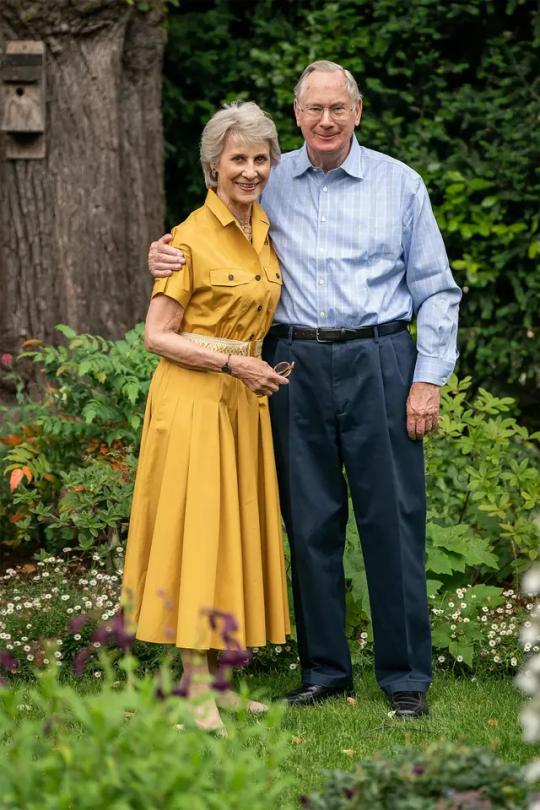



He married Birgitte van Deurs Henriksen on 8 July 1972; the Duke and Duchess of Gloucester have three children. Other than the fact that I think he's cute and that he was practiced as an architect, I have no other research to offer you.

43 notes
·
View notes
Text

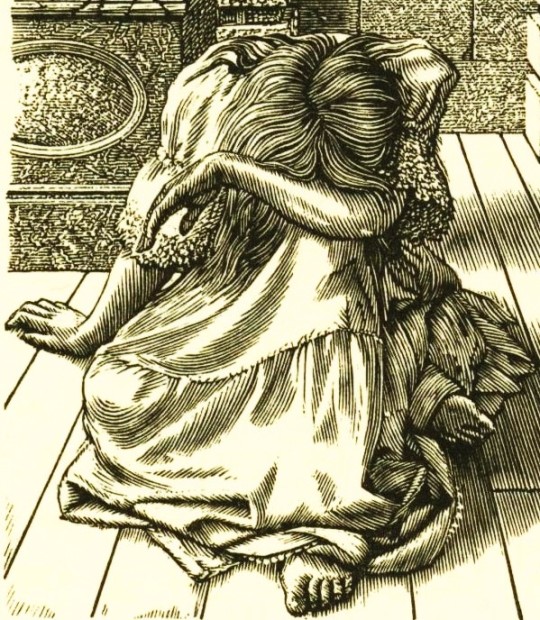
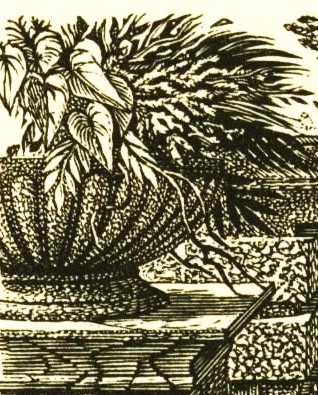
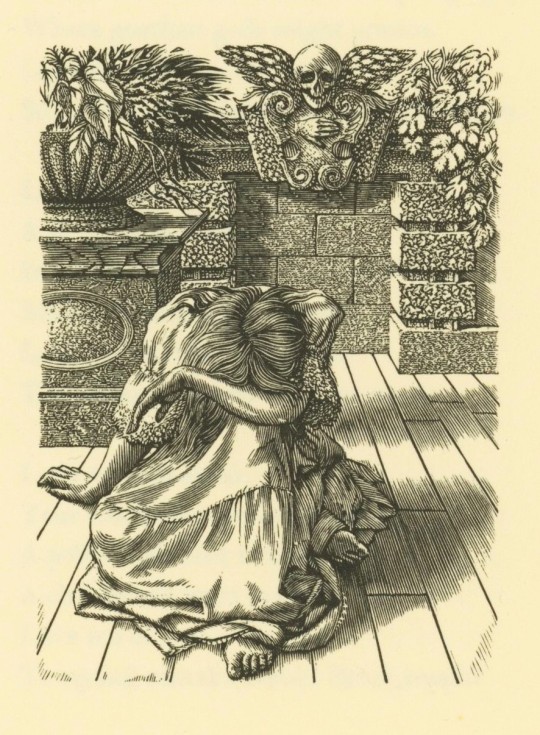
Wood Engraving Wednesday
RICHARD SHIRLEY SMITH
English painter, illustrator, muralist, and wood engraver Richard Shirley Smith (b. 1935) produced this engraving for the title page of a collection of poems entitled The Closed Door by British writer James Reeves (1909-1978), printed by Claire Van Vliet and Susan Johanknecht at Van Vliet's Janus Press in Newark, Vermont in an edition of 240 copies, and co-published in 1977 by Twinrocker and the Janus Press, with 75 copies for Twinrocker in Brookston, Indiana and the Janus Press and 165 for the Gruffyground Press in England.
Smith studied at the Slade School of Fine Art in London and continued his studies in Italy where he became interested in classical themes and Italian architecture, as reflected in this engraving. It was in Rome during the early 1960s where he taught himself wood engraving, a medium that has brought him the most attention. He writes, "My . . . years of wood engraving has been the backbone of my reputation, such as it is."
Our copy of The Closed Door is another gift from our friend Jerry Buff.

See other posts with wood engravings by Richard Shirley Smith.
View other posts with works printed by Claire Van Vliet.
View more posts with wood engravings!
#Wood Engraving Wednesday#wood engravings#wood engravers#Richard Shirley Smith#James Reeves#Claire Van Vliet#Susan Johanknecht#Janus Press#Twinrocker#Gruffyground Press#fine press books#fine press printing#Jerry Buff
72 notes
·
View notes
Text
Poems, Port & Persuasion

Gabriel and Joana travel to Edith’s country estate, after years of strife

Somewhere outside of Hastings, England, July 1667
“Remarkable,” Joana called out to Gabriel, her voice barely audible above the roar of jovial laughter, of chatter, as they entered the room, the carriage having arrived late (a highwayman, rather unsurprisingly, who seemed rather content to see them on their way with a rather muddled, one sided exchange in Portuguese and a bottle of Port, courtesy of Gabriel, and a gift to Edith for god knows what reason– some long forgotten favour or bet, Joana suspects, shoved hastily into his arms, and then a felled tree on their path, following the other nights storm– of which they managed to miraculously avoid on their journey across to England by a mere day, allowing them to reach Hastings safely, where they landed) to their destination, a rather quaint inn in Hastings itself, a mere few hours from the vast, fine house Edith keeps for herself. The house itself, the pinnacle of architecture during the reign of Elizabeth, the land gifted to her by her beloved queen and true to the fashion of the time, incorporated many such features of the remains of a monastery in the area, the grand arches a telltale sign of this, whilst highlighting the highly ornamental, elaborate style of building that was quintessential to the era, that Joana knows Edith adored tremendously, the house perfectly symmetrical in design, with tall windows and tan bricks, a tall, imposing building, adorned with a archway at the entrance. The house, simply dubbed Hastings House by Arthur when discussed in conversation, was closer to the sea than any property Arthur himself kept, full of lush greenery so she may ride along the cliffs edge and hunt as she sees fit in her offtime, Edith’s own sanctuary, a perfect embodiment of her. “I do not believe I have seen this house so…spirited.” her eyes scoured the room, finding Edith, clad in a silk green gown, one puffed sleeve falling haphazardly off her shoulder, pooling at her arm, holding a piece of paper, her other hand outstretched dramatically, frantically gesticulating as she read, rather loudly, to a small circle of men and women, ruddy, red-cheeked, rosy lips smudged slightly, her face pulled into a wonderful smile.
“Or Edith herself, for that matter.” Gabriel added, dragging his eyes from Edith around the room, to Arthur, sat beside where Edith was standing, collar loose, cravat long gone, a glass of port in his hand and a gentle smile on his face, cheeks also red, periwig discarded on the table besides him to reveal his cropped hair, his doublet thrown over the back of his chair. It was the most casual he had seen either of them in a long time, far from the tense, sombre Edith and Arthur they had seen the previous year, wound up tight from the plague outbreak of ‘65 in London and their capital subsequently burning down (who knows what they had done to incur the lord’s wrath in such a short time, Gabriel remembers Joana remarking when she had received news of their misfortune). Indeed, it was remarkably refreshing, and relieving, to see them so joyous, so at ease. And as Edith threw her arm out, broadly gesturing to the window as she recited her poetry, her eyes falling to Gabriel, widening and then falling back to their naturally tired look, green-brown boring into deep blue, a smile spreading across her face as she beckoned him over, never once giving her up reading. As he made his way over (Joana not far behind, barrelling into Arthur and firmly falling into the seat next to him, no doubt exhausted and eager for a drink), Gabriel shrugged loose his cravat, finding Edith’s waist with his hands, and lifting her down from the table she’d been precariously balancing atop.
“Gracious, have you no love for the arts, my dear? I was hardly finished.” Edith gave a playful huff, but kissed his cheek nonetheless, a small greeting.
“I have, indeed, a love for the arts, treasure, but much prefer your safety, I’m afraid.” he eyed the hard-wood chairs all around the low table, and knew precisely how much damage they were capable of (foggy memories of another, more sombre night here pop to mind, a bottle and a half of wine drank between them, when he, trying to stand up to close the window– which was letting in such a terrible draft– and tripped on his long discarded boots, tumbling headfirst into the side of Edith’s chair and waking up the next day in Edith’s bed, her at his side straight faced, thin lips pursed, deep crease in between her eyebrows, hiding her worry in that way she always did).
She kissed his cheek again, this time a wordless thank you, before she threw her arm around his shoulders, pulling him close.
“Come, my dear, have a drink, Arthur has brought some sherry from his recent journeys abroad.” she gestured to the bottle on the table besides Arthur, who had already poured Joana a drink of her own (which she was now halfway through the small glass, not too impressive but definitely unusual for Joana– perhaps she was more stressed by their disruption than he assumed), who then begun to pour another one for Gabriel, his hand shaking somewhat, unsteady, intoxicated.
“Gabe, it’s a pleasure to see you in one piece. Pray tell, why are you both so late?” Arthur raised a thick brow, handing the drink to him, and Gabriel sat on the arm of the chair next to him, giving Edith the seat.
Gabriel took a sip of the sherry, “We were held up, nearly robbed.”
“Were robbed,” Joana cut in, nodding towards Edith with a grin on her face, “he lost your Port.”
“My Port? God, what an ambitious criminal,” Edith patted Gabriel’s thigh, cheeky and so very drunk, “well, my dear, I believe you owe me two bottles now, for that.” she kept her hand resting on his thigh, easy, comforting, “are you both alright?” she leaned forward, her other sleeve falling down her shoulder, grasping Joana’s hand.
“We are, the young man seemed baffled by our Portuguese, it was remarkably easy to deter him.” Joana squeezed Edith’s hand, “we are quite alright, my dear.”
“Was it nearby? I assure you, if it was one of my tenants–”
Arthur interjected, playing with one of Joana’s ringlets, “Edith, there is no need to worry about that tonight, it is much too late.”
“And you have clearly not had enough to drink if you can sober up so quickly.” Gabriel mused, grabbing his glass and handing it to Edith, that crease appearing between her eyebrows that often did when she thought too deeply, trying best to resolve the matter at hand no doubt.
“My goodness, must you all act nursemaid to me? I shall relax, as it is a joyous occasion, after all,” Edith took a sip from her glass, gesturing to a young woman, dressed in a most gorgeous blue gown, sat a bit away, her dress trimmed with gold and fine venetian lace, holding a small piece of paper, her voice raising slightly, “my dear friend, Amelia, has finally had her works published.”
A small cheer erupted from the room, Amelia smiled, and Edith took a swig of her drink, her face still ruddy, leaning against Gabriel’s thigh as she finally, finally, relaxed.

Notes:
This is the first bit of actual writing I’ve done in a while, so I may be rusty
Edith’s estate is fictional, but loosely inspired by some of the places I visited with my boyfriend over the summer, particularly along the south coast, as evident by the references to Hastings
The woman mentioned, Amelia, is a reference to the writer Aemelia Lanyer, decades after she passed but I love her writing so much
This is both a piece I’ve been writing to impart some of my knowledge about the 17th century, but also as a means of getting back to my routes in an odd way, writing about Hetalia which I haven’t done earnestly in a good year and a half, hence why I chose to set it in Hastings (that, and it's absolutely beautiful there)
Dedicated to @owlrolls who’s waiting so patiently for me to actually finish the many WIPs I’ve show her, this is for you bestie
#writing#hetalia#hws england#hws portugal#nyo england#nyo portugal#engport#nyo engport#more implied but shh#god this is so ass#please accept my silly little fanfic as I try and get back into writing#this won’t be a regular occurrence but I’ll do my best
17 notes
·
View notes
Text




On October 24th 1796 the artist, David Roberts, was born in Edinburgh.
The son of a shoemaker, who began his career as an apprentice house painter. Roberts was born in Stockbridge, near Edinburgh, and while a boy he was a frequent visitor to Rosslyn Chapel, it’s architecture is a complex fusion of influences from many cultures, and it has been mentioned that it was an immense inspiration to the painter.
At the age of 19, after studying art formally at night, Roberts became foreman of work at Scone Palace for a time. Returning home in search of a new job at the end of the project, he took work as a scenery painter for James Bannister’s circus. Bannister offered him more work, engaging him on a good salary of 25 shillings a week, and for a while Roberts toured the country with the circus.
Through Bannister, Roberts then found work at the Pantheon Theatre in Edinburgh, but when the venture failed, he returned to his trade of house painter and decorator. All the time he was working on the “day job”, he was also practising his sketching and painting, thus developing his fine art skills.
Roberts returned to painting scenery for theatres in Edinburgh and Glasgow, meeting his wife, the actress Margaret McLachlan, at the Theatre Royal in Edinburgh. They had one child, Christine. In the early 1820s he exhibited work at the Fine Arts Institution in Edinburgh, including scenes of the abbeys of Melrose and Dryburgh, which were popular themes due to the immense interest in the history of the Anglo-Scottish border created by the work of Walter Scott.
Roberts was offered work in London, at first by the Coburg Theatre and then the Theatre Royal in Drury Lane. Soon Roberts was commissioned to work for Covent Garden, while also successfully exhibiting at the British Institution. Gothic, romantic and religious themes were still popular in art and Roberts continued to produce paintings of Scottish abbeys and famous European Cathedrals. He developed his range into landscapes and seascapes, as well as Biblical and antiquarian themes, achieving fame though his painting “Departure of the Israelites from Egypt”.
Roberts began to travel in 1832, producing a series of lithographs from his trip to Spain and Morocco. In 1838, he embarked on a tour of Egypt, Nubia, Sinai, Syria and the Holy Land, and his sketches, paintings and lithographs were hugely in demand on his return. Publication of “Sketches in the Holy Land and Syria, 1842–1849” and “Egypt & Nubia” followed, volumes that ran to many editions and are still popular as reprints today.
When he returned to Scotland, the Royal Scottish Academy feted him at a public dinner. As a result of this, Roberts advised the Academy that he was worried about work that was being done at Rosslyn Chapel. One of the major architectural conflicts of the time was between the “romantic school” who viewed overgrown buildings as beautiful in their own right, even seeing the moss and overgrowth as protective, and those who wished to restore and preserve buildings.
When he returned to Scotland, the Royal Scottish Academy feted him at a public dinner. As a result of this, Roberts advised the Academy that he was worried about work that was being done at Rosslyn Chapel. One of the major architectural conflicts of the time was between the “romantic school” who viewed overgrown buildings as beautiful in their own right, even seeing the moss and overgrowth as protective, and those who wished to restore and preserve buildings.
Roberts also visited Italy in the early 1850s, producing a volume of paintings entitled “Italy, Classical, Historical and Picturesque”. The last 15 years of his life were spent carrying out prestigious projects such as the painting of the opening of the Great Exhibition of 1851. He became a member of the Royal Academy and was given the freedom of Edinburgh. His distinctive style and intuitive interpretation of light were emulated by many artists who came after him.
The last time I posted about David Roberts I featured his work in Palestine and Egypt, the pics this time around are his home grown work, the first being a self portrait, next is his apparent inspiration, the Entrance to the Crypt, Rosslyn Chapel, St. Mungo’s Cathedral, Glasgow and Dumbarton Rock.
If you want to see more of his work check out the Royal Academy's site here.https://www.royalacademy.org.uk/art.../name/david-roberts-ra
8 notes
·
View notes
Text
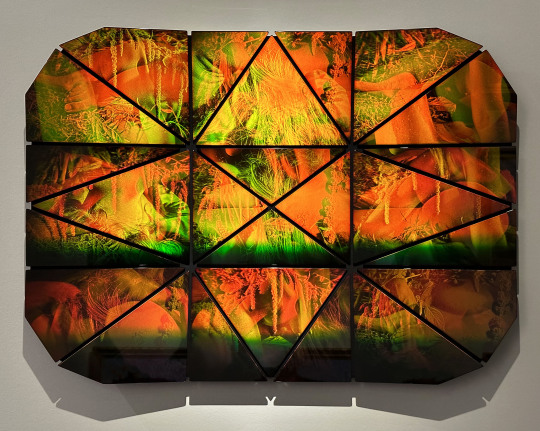
Sarah Meyohas, “Interference #19”, 2023, Holograms, mirrored black glass, aluminum
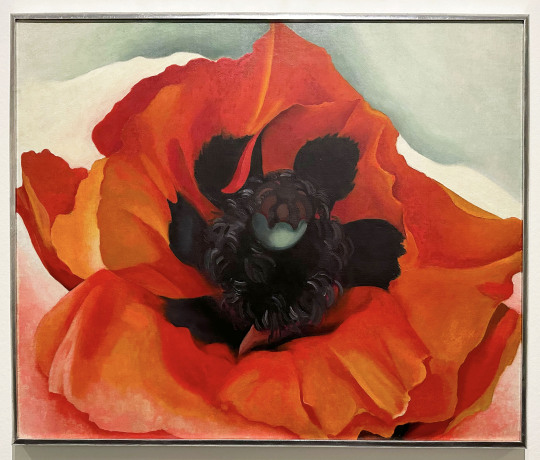
Georgia O’Keeffe, “Poppy”, 1927, Oil on canvas
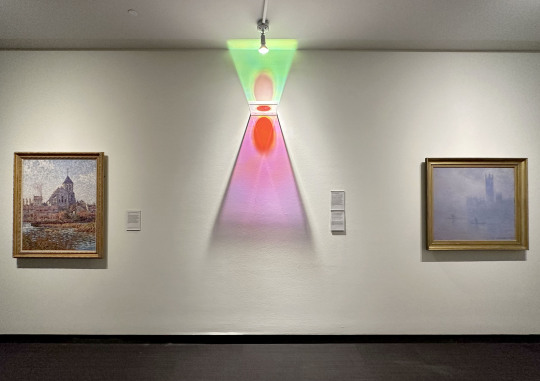

Francis Picabia “The Church of Montigny, Effect of Sunlight” 1908, Oil on canvas (left); Christian Sampson “Projection Painting”, 2023, Acrylic and films with LED light; and Claude Monet “The Houses of Parliament, Effect of Fog, London” 1904, Oil on canvas (right)
The Nature of Art exhibition at the Museum of Fine Arts St. Petersburg merges art from the museum’s collection with loaned works to explore- “art’s crucial role in our evolving quest to understand our relationship with nature and our place in the cosmos”.
One of the benefits of an encyclopedic museum is that visitors have the opportunity to experience art throughout history, and to revisit works that resonate with them. For the section titled Artist as Curator, Sarah Meyohas and Christian Sampson chose pieces from the museum’s collection to pair with their own work.
From the museum-
At first glance, perhaps, these may seem like unusual combinations, but upon deeper contemplation, their selections reveal complementary artistic intents. For instance, Meyohas and Georgia O’Keeffe share an interest in close looking, particularly in finding new ways to examine underappreciated aspects of the natural world. Sampson, influenced by the California Light and Space Movement, is interested in current scholarship that suggests the hazy fog found in Claude Monet’s work is an early depiction of air pollution, offering an entirely new perspective on the artist’s representations of light.
Sampson also created the four-part installation, Tempus volat, hora fugit, on view until 2025 at the museum.
Below are some of the works from additional sections of the exhibition.
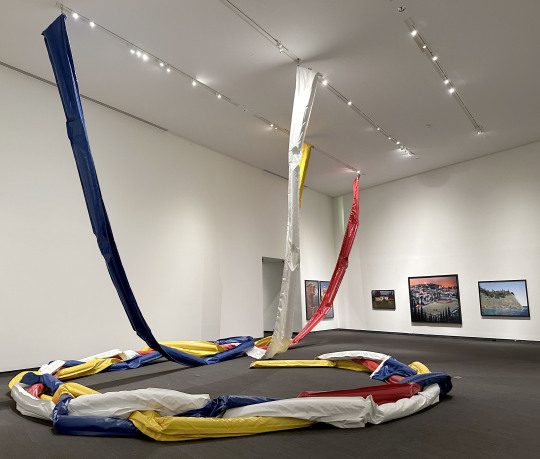

Postcommodity, “kinaypikowiyâs”, 2021, Four 30.5-metre industrial debris booms
Postcommodity is an interdisciplinary art collective comprised of Cristóbal Martínez (Genizaro, Manito, Xicano), and Kade L. Twist (Cherokee).
About Postcommodity’s work, kinaypikowiyâs, (seen above) from the museum-
This work is composed of debris booms, used to catch and hold environmental contaminants such as garbage, oil, and chemicals. The colors of the booms correspond to different types of threats— red (flammable), yellow (radioactive), blue (dangerous), and white (poisonous)-in the labeling system for hazardous materials. To indigenous peoples, these are shared medicine colors that carry knowledge, purpose and meaning throughout the Western Hemisphere. Suspended like hung meat, the booms represent a snake that has been chopped into four parts. Each part represents an area of the colonial map of the Western Hemisphere: South America, Central America, North America, and all of the surrounding islands. The title, kinaypikowiyâs, is a Plains Cree word, meaning snake meat. Divided by borders, Postcommodity asserts that all people living in the Americas are riding on the back of this snake.


James Casebere, “Landscape with Houses (Dutchess County, NY), 2009, Archival pigment print mounted to Dibond
James Casebere creates architecturally based models for the large scale photographs seen above.
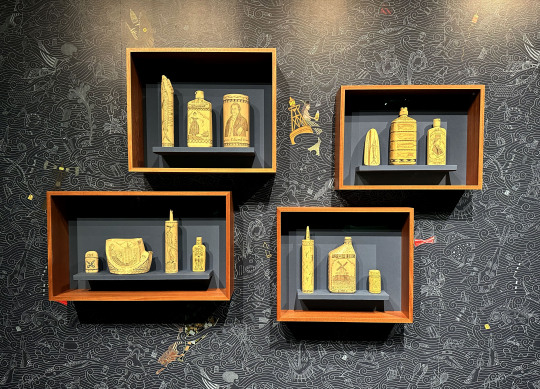
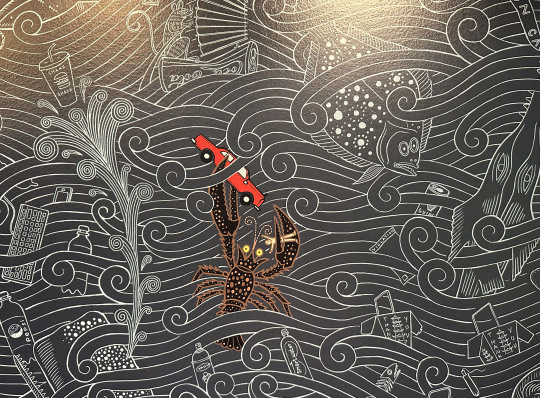
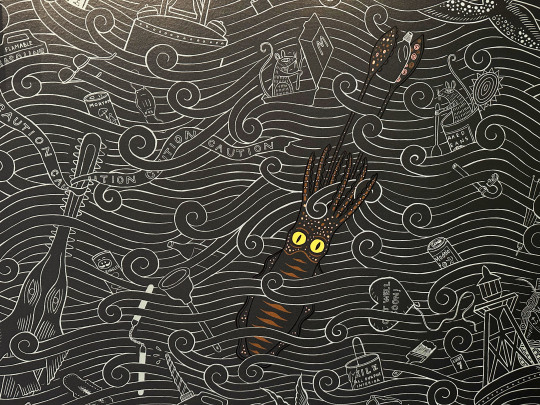
Duke Riley's Reclaimed ocean plastic sculptures and “Tidal Fool” wallpaper
Duke Riley’s work, which was previously shown at Brooklyn Museum, addresses issues of environmental pollution by using discarded plastics found in the ocean and other waterways to create new work inspired by the past. You can hear him discuss his work in this video.
From the museum-
Inspired by the maritime museum displays he saw while a child growing up in New England, Riley’s scrimshaw series is a cutting observation of capitalist economies-historic and today-that endanger sea life. The sculptures were created for the fictional Poly S. Tyrene Memorial Maritime Museum, and are contemporary versions of sailors’ scrimshaw, or delicately ink-etched whale teeth and bone. Riley first thought about using plastic as an ode to scrimshaw when he saw what he thought was a whale bone washed up on the beach in Rhode Island; it turned out to be the white handle of a deck brush. Riley regularly removes trash from beaches and waterways, and often uses this refuse in his work.
Riley collaborated with Brooklyn-based Flavor Paper to create these two custom wallpapers for his solo exhibition DEATH TO THE LIVING, Long Live Trash at the Brooklyn Museum. Tidal Fool exhibits Riley’s trademark humor in the face of devastating water pollution; notice the Colt 45-guzzling mermaid. Wall Bait vibrantly references Riley’s meticulous fishing lures, which he crafts from refuse found in the waters around New York City.


Daniel Lind-Ramos,"Centinelas de la luna nueva (Sentinels of the New Moon)", 2022-2023, Mixed media
From the museum about this work-
In Centinelas de la luna nueva, he evokes the elders of the mangroves, spiritual beings who watch over and ensure the health of this essential coastal tree. Mangroves are the basis for a complex ecosystem that shelters sea life and serves as the first line of defense in the tropical storms that batter the sub-tropics -including Florida.
Lind-Ramos's practice reflects the vibrant culture of his native Loíza, Puerto Rico, by honoring local agriculture, fishing, cooking, and masquerade. His sculptures also evoke Hurricane Maria (2017), the COVID-19 pandemic, and ongoing environmental degradation. Lind-Ramos is committed to the survival and sustenance of Afro-Taíno traditions and people of the Puerto Rican archipelago. However, his art engages the global community through shared emotions, parallel histories, and the commonality of human experience.
The next post will discuss two other artists in the exhibition, Brookhart Jonquil and Janaina Tschäpe.
#Art#Museum of Fine Arts St. Petersburg#The Nature of Art#St. Pete Art Shows#Art Shows#Sarah Meyohas#James Casebere#Christian Sampson#Kade L. Twist#Christóbal Martínez#Postcommodity#Claude Monet#Daniel Lind-Ramos#Duke Riley#Georgia O'Keeffe#Environmental Art#Flavor Paper#Florida Art Show#Florida Art Shows#Francis Picabia#Holograms#Brooklyn Museum#Light and Space#Mixed Media Art#Models#Painting#Photography#Plastic#Recycled Art#Janaina Tschäpe
34 notes
·
View notes
Text
October 29th 2024
I love dark academia. I love how it romanticises academic pursuits, high culture, knowledge, introspection, autumn chills and dark evenings, libraries, museums, art galleries— at a time when our government has cut funding to the bone and contemporary mainstream culture ridicules such things. We know how important it is for a community, a culture to be built around these fine institutions, accessible to all, fostering prosocial behaviours to each generation.
The architecture; Oxford, Edinburgh, York, Durham, old London. We appreciate the beauty, craftsmanship, and how it inspires us to treat our environment with care and respect.
I don't care if it's pretentious. I don't care if it's seductive. Be the soft spoken man with the swoopy hair, knitted jumper and beige trousers. Be the woman in the sweater vest and tartan skirt, well-read and timelessly elegant.
If you got a cosy feeling reading this— I guess that just means great minds think alike.
8 notes
·
View notes
Text
The thing about critics…..
I once received a comment about my images, suggesting that perhaps I should consider making them brighter, as they appeared too dark to the viewer’s eye. It’s not the first time I’ve heard such feedback, and it likely won’t be the last. The question arises: have I ever contemplated heeding this advice? The answer is a simple yes. But do I actually make my images brighter in response? No. Why? It…

View On WordPress
#architecture#Black & White#black & white architectural photography#black and white#black and white photography#Fine Art#fine art and photography#fine art architectural photography#fine art architectural photography tutorial#fine art architecture London#minimal architecture#minimal composition#minimal fine art photography#minimal photography#Photography
22 notes
·
View notes
Text


©all rights reserved / htm.studios/2023/126
Waiting for the sun.....!
#photographers on tumblr#art photography#haluk turgut mengüç#artists on tumblr#©htm.studios#black and white#monochrome#landscape#htm.studios#landscapes#fine art photography#waiting for the sun#London days#architecture#early hours#mono#©all rights reserved / htm.studios
32 notes
·
View notes
Note
I went to a lot of comic cons in college. My impression was that most of the creators were… creatives. People that spend long hours in front of a drawing board or a typewriter, building worlds out of the aether that is their brain(s). That’s illustration to me. Physically manifesting the metaphysical, moment by moment. Picking the best moments for each beat of the story.
I -flat out- went to school to be a comic book artist. I just cannot fathom feeding my wife and my boys by manifesting the images in my head into a monthly income. But hey, that’s me. Your work is a continuous source of inspiration and joy for me.
My eldest son loves the power rangers. He he drew the green ranger in pencil on a canvas. He then painted the drawing with acrylic. He had a full-on meltdown when the painting didn’t look as good as he wanted it to look.
I sat with him and explained the process of creating comic book artwork. From blueline to publication. I spoke with him about the value of perseverance, and the value of using mixed media. He waited a day and then outlined his painting with Sharpie. He BEAMED with pride when he showed me the final product. Made me so, so happy.
Rodin was a hack. Dude had no deadlines, and no narrative outline.
Keep being awesome. You are an inspiration to me, to my boys, and to generations to come.
I am so glad you are encouraging your son to make art and enjoy it, and it is great that you find so much to appreciate in comic art and have so much respect for those who make it. We all truly appreciate it.
A few thoughts, if I may.
If you want your son to understand and appreciate mixed media, you might want to move him away from using markers like Sharpies.
If you are concerned about the longevity of the original art, I regret to inform you alcohol based markers such as Sharpies and Copics are not lightfast. That is to say, they fade on exposure to UV light. They do not use pigmented inks, they use dyes.
The fading may not happen today, it may not happen tomorrow, but it will happen sooner than you would like. Many well-known cartoonists who used Sharpies on their original comic pages, or did commissions sketches using them, have seen the art fade markedly (pun intended) over time.
Here's what that looks like.

This Klaus Janson commission has just about gone home to Jesus.
Try to switch to pigment based markers, such as those from Faber Castell, or go wild and learn to use a crow quill.
Also, while I truly appreciate your kind compliments, it's not necessary to do that at another artist's expense.
Rodin was the complete opposite of the definition of "hack".
A hack is a term originally used for one who works on tight deadlines to publisher specifications, and produces poor quality work.
That's not Rodin.
Rodin was a spectacular talent who earned his place in the canon. He came from humble beginnings and spent the first two decades of his career sculpting decorative architectural elements. He obtained his place as a fine artist after many years of struggle.
And even then, a fine artist often works to deadline, as there are salons and exhibit specs that must be met, as well as the requirements of patrons and clients, to say nothing of the grueling formal training aspiring artists were subjected to in the ateliers.
His work often contains strong narrative elements as well, as evidenced by his design for The Gates of Hell.
In fact, for most of the history of modern art, narrative elements were considered anti-art. As someone who prefers 19th century genre art, this attitude is bummerific.
The term "hack" comes from the 17th century term "Grub Street Hacks".
Back in the day writers did not get royalties. Bookstores usually published books and paid writers a flat fee and never another penny, which resulted in a lot of very broke writers, or writers who came from wealthy families who could afford to scorn the sordid topic of coin.
Grub Street was located in London where a lot of book publishers were housed next to brothels and flophouses. It's now known as Milton Street. This area was the location of the lowliest of the low publishing joints.
The great Samuel Johnson was once a Grub Street Hack.
I've just read the most wonderful book about Samuel Johnson which has many amazing details about the development of publishing. The Club: Johnson, Boswell and The Friends Who Shaped an Age. My highest recommendation, though some will be very upset by attitudes and behaviors toward the women in these men's lives.
Johnson, despite many years of poverty, was able to escape after his work eventually earned him a royal pension. When well-thought of creative people couldn't make royalties, they were supported by wealthy patrons and the royal pension system.
While I don't have a formal education, I spent many years doing research for auction catalogues and ghost writing articles about art history, which is why I am annoyingly pedantic about it all to this day.
63 notes
·
View notes
Text
















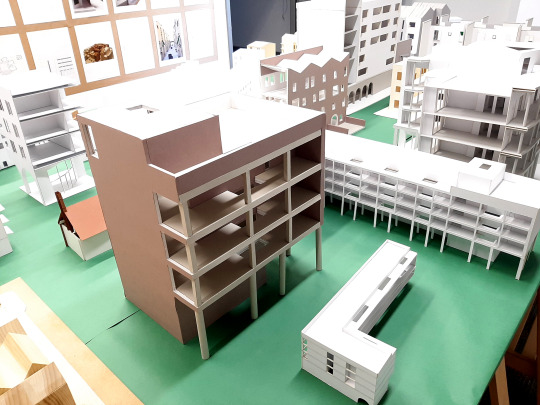













"London Metropolitan University _ The School of Art, Architecture and Design _ Summer Show 2024" _ 19-29.06.2024 _ 16 Goulston Street, London, E1 7TP _ Photos by Spyros Kaprinis [27.06.2024].
"Our students have been working extremely hard on their final projects of the year and we're excited to share with them with you at this exciting event.
From 19-29th June 2024 students from all art, architecture and design courses will exhibit their work. The exhibition areas will be Goulston Street (architecture, interiors, and visual communication courses), the Wash Houses (fashion, fashion textiles, product and furniture design, and textiles), Calcutta House (upholstery), and the Annexe (fine art, fashion photography, and photography)."
#London Metropolitan University#LMU#Architecture and Design#Summer Show#2024#Theo Thysiadis#Spyros Kaprinis#Chris Smith#Tony Fretton#16 Goulston Street#Stephen Taylor Architects#Peter St John#London#UK
8 notes
·
View notes
Text
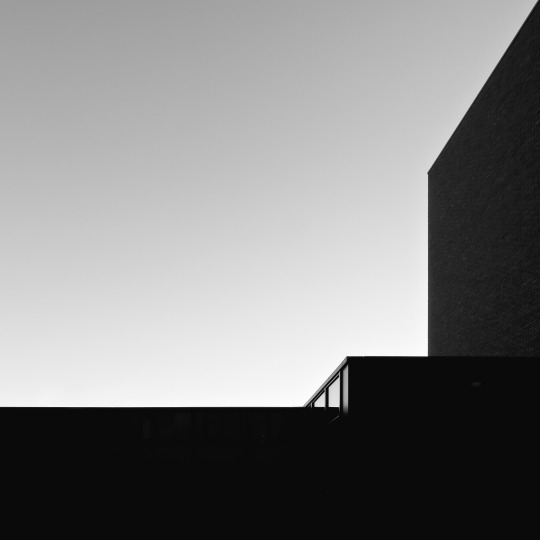
Some good news.. 18TH ANNUAL BLACK AND WHITE SPIDER AWARDS HONORS PHOTOGRAPHER KOEN VAN DAMME FROM BELGIUM LOS ANGELES NOVEMBER 22, 2023 - Professional photographer Koen Van Damme of Belgium was presented with the 18th Annual Black and White Spider Awards 2nd Place - Merit of Excellence in the category of Architectural at a prestigious Nomination & Winners Photoshow streamed Saturday, November 18, 2023. The live online gala was attended by industry leaders and the photography community from around the globe who logged on to watch the climax of the world’s premier event for black and white photography. 18th Annual Jury members included captains of the industry from Phillips, London; Flatland Gallery, Amsterdam; David & Goliath, Los Angeles; San Francisco Museum of Modern Art; Saatchi & Saatchi, London; Portuguese Center of Photography, Porto; Jason McCoy Gallery, New York; Hulsbosch, Sydney; Willas Contemporary, Stockholm; FCB Global, New York; ADK Creative One Inc., Tokyo; The ArtFactory Club, Vienna; Silvan Faessler Fine Art, Switzerland; Goldsmiths, University of London; Alfred Ehrhardt Foundation, Berlin; DDB Canada, Edmonton; Galleria Valeria Bella, Milan; David Clarke, London; Chiara Badinella, Art Advisory & Appraisals, Milan; Goodby Silverstein & Partners, San Francisco; Grey Group, New York; and Galerie Bugada Cargnel in Paris who honored Spider Fellows with 612 coveted title awards and 561 nominees in 33 categories. “This year we saw another outstanding set of entries sparking some really fresh ideas, and making it very hard to select winners.” Commented Marcel Wijnen, Creative Director, Hulsbosch, Sydney. “Once again the Black & White Spider Awards has delivered a range of excellent winners in both the Professional and Amateur categories. There are a number of truly amazing images - not only the winners but also those with Honorable Mention. As a judge it was a challenge to select from so many strong submissions. Added Conrad Hechter, Correspondent, Goldsmiths, University of London. “It’s an incredible achievement to be selected among the best form the 6,193 entries from 69 countries we received this year” said Basil O’Brien, the awards Creative Director. “Koen Van Damme’s “Care center”, an exceptional image entered in the Architectural category, represents black and white photography at its finest, and we’re pleased to present him with the title of Merit of Excellence.” BLACK AND WHITE SPIDER AWARDS is the leading international award honoring excellence in black and white photography. This celebrated event shines a spotlight on the best professional and amateur photographers worldwide and honors the finest images with the highest achievements in black and white photography. www.thespiderawards.com
6 notes
·
View notes
Text

London (CNN) — An art historian has identified a missing portrait of King Henry VIII after spotting it on social media.
British fine art researcher Adam Busiakiewicz was idly scrolling on X when he was stopped in his tracks by a post from somebody he follows.
The post was a photograph shared by Tim Cox, Lord Lieutenant of Warwickshire, an honorary position representing the British Crown in the central English county.
It showed a gathering at a reception in Warwick’s Shire Hall, where Warwickshire County Council is based.
But Busiakiewicz wasn’t interested in the people smiling at the camera.
His focus was on the background where, hanging on a wall, was what he suspected was a missing portrait of the Tudor monarch Henry VIII.
In a post published on his blog earlier this month, Busiakiewicz said he had been “scrolling at speed” when he spotted the painting “with a distinctive arched top” on the wall.
He was immediately reminded of a series of 22 portraits commissioned by a local politician and tapestry-maker during the 1590s.
According to Busiakiewicz, Ralph Sheldon (1623–1684) commissioned the pictures – which were mostly of kings, queens and “significant contemporary international figures” – to hang in his home, Weston House in Warwickshire.
The reason they had arched tops was because they “were once incorporated into an architectural frieze of the Long Gallery at Weston,” Busiakiewicz said.
In a press release sent to CNN, Busiakiewicz said the arched top was a “special feature of the Sheldon set,” while the painting’s frame was “identical to other surviving examples.”
The painting also showed the king holding a sword and wearing a feathered hat – just as he appeared in an engraving of the Long Hall made by antiquarian Henry Shaw in 1839.
The series of portraits was later dispersed at auction and “the majority remain untraced to this day,” according to Busiakiewicz.
After making his theory public, Busiakiewicz visited Warwick’s Shire Hall together with local historian Aaron Manning to see the painting close up.
“The portrait is large, and completely in-line with the other Sheldon portraits,” Busiakiewicz wrote in a later blog post, on July 22.

In a telephone call with CNN, Busiakiewicz revealed that this was not the first discovery he had made thanks to social media.
In 2018, he stumbled across a picture a friend had taken at a wedding and posted on Instagram.
It featured a portrait that he identified as the work of 17th-century female artist Joan Carlile (1606–1679).
“Social media is a crazy thing,” Busiakiewicz told CNN, “because some people use it to watch cat videos and follow what’s going on in the world, and then people like me just look at what people have hanging on their walls.”
A spokesperson for Warwickshire County Council told CNN in an email that Busiakiewicz and Manning approached them about the painting and arranged to come and see it.
“Adam and Aaron viewed the painting at Shire Hall, and have confirmed they think it is definitely one of the Ralph Sheldon commissions,” the spokesperson wrote.
“Since this discovery, the painting has been moved into our Museum Collections Centre to allow further research to take place.”
Busiakiewicz told CNN that the identity of the painter is not known, but the creator of the portraits is sometimes referred to as "The Sheldon Master.”
He is now working on trying to establish the painting’s provenance.
It was acquired by the council as recently as 1951 but there are gaps in the records.
“Provenance is always such a really tricky thing - it’s very hard sometimes to find, particularly when pictures are sold privately. But there’s no doubt that this is Ralph Sheldon’s painting of Henry VIII,” he said.
“Looking at paintings and pictures of paintings is my life and it’s great fun, particularly when you can in some way right a historic wrong, let’s say.
Pictures that are overlooked, pictures that aren’t appreciated as much as they might be.”

#King Henry VIII#British Royal Family#House of Tudor#tudor dynasty#Adam Busiakiewicz#Tim Cox#Lord Lieutenant of Warwickshire#Shire Hall#Warwickshire County Council#missing portrait#art history#Ralph Sheldon#Weston House#Warwickshire#Long Hall#Henry Shaw#Aaron Manning#Joan Carlile#Museum Collections Centre#The Sheldon Master#paintings
5 notes
·
View notes